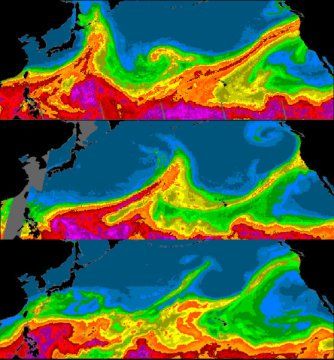How Atmospheric Rivers Change as the Climate Warms
Published on by Water Network Research, Official research team of The Water Network in Academic
A high-resolution climate model based at NCAR accurately captures the ribbons of moist air, allowing scientists to investigate how 'atmospheric rivers' may change as the climate warms.
 These rivers in the sky can unleash drenching rains when they crash onto land.
These rivers in the sky can unleash drenching rains when they crash onto land.
Since these downpours can alleviate droughts and also cause damaging floods, scientists are keenly interested in how their frequency, intensity, or path may be altered with climate change.
Standard-resolution climate models have had difficulty realistically simulating atmospheric rivers and their impacts.
In a pair of studies published this summer in the journal Geophysical Research Letters, NCAR scientists Christine Shields and Jeffrey Kiehl tested to see if a high-resolution climate model could do a better job.
They found that a version of the NCAR-based Community Climate System Model 4.0 (CCSM4) with a resolution twice as high as normal does a good job of capturing the frequency with which atmospheric rivers made landfall over the last century as well as their locations and associated storms.
The studies find that future changes to atmospheric rivers in general -- including a possible increase in the number that make landfall in Southern California - will likely be dependent on how jet streams change in a warming world.
"Atmospheric rivers play an extremely important role in Earth's water cycle. At any latitude, they account for only 10 percent of the air but they transport as much as 90 percent of the water that is moving from the tropics toward the poles," Kiehl said. "Understanding atmospheric rivers is critical to understanding how the entire climate system works."
The how and why of future changes
Atmospheric rivers were first discovered in the 1990s, and much of the early research was focused at understanding their detailed structure and the dynamics of how they form.
The high-resolution version of the CCSM4 has a resolution of about 50 kilometers (31 miles), it does a better job of capturing narrower phenomena, like the rivers.
It also represents the complex terrain on the land surface that can trigger the atmospheric rivers to release rain or snow. As the rivers plow into the mountains of California, for example, they're forced higher into the atmosphere, where the moisture condenses and falls to the ground.
As they'd hoped, the model did do a better job than a standard-resolution climate model at representing both the atmospheric rivers and their interactions with terrain. This allowed them to run the model forward to get a look at what rivers might do in the future if human-caused climate change continues unabated. What they found is that how -- and why -- atmospheric rivers change depends on the area of the world.
Source: Science Daily
Media
Taxonomy
- Modeling
- Climate Change
- Atmospheric Water Generation